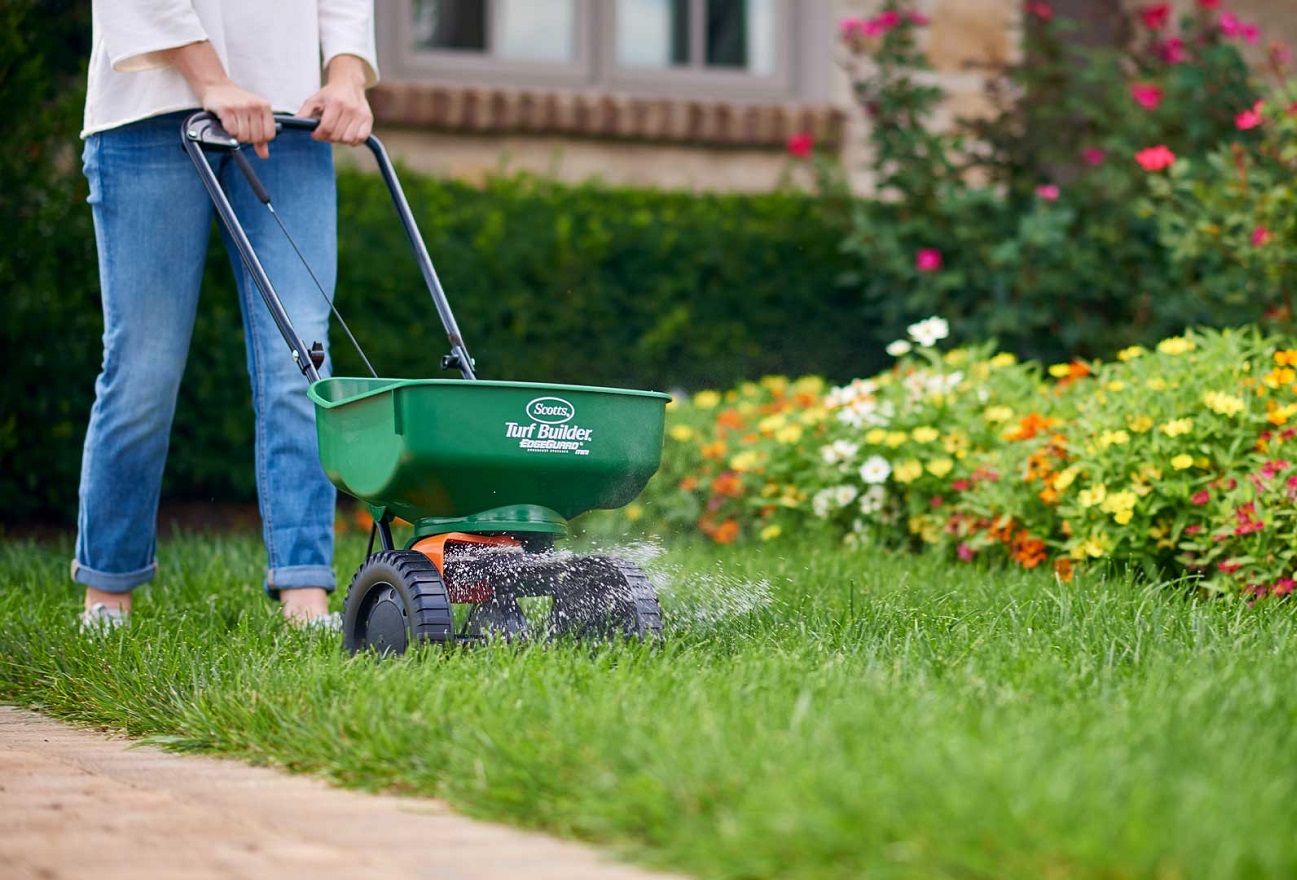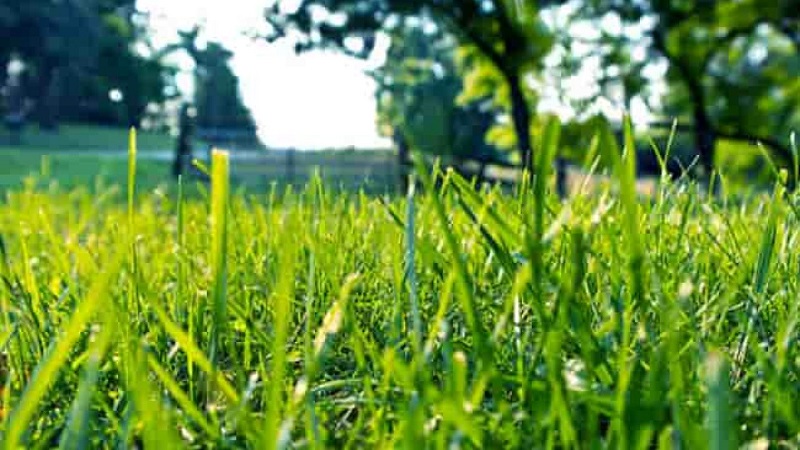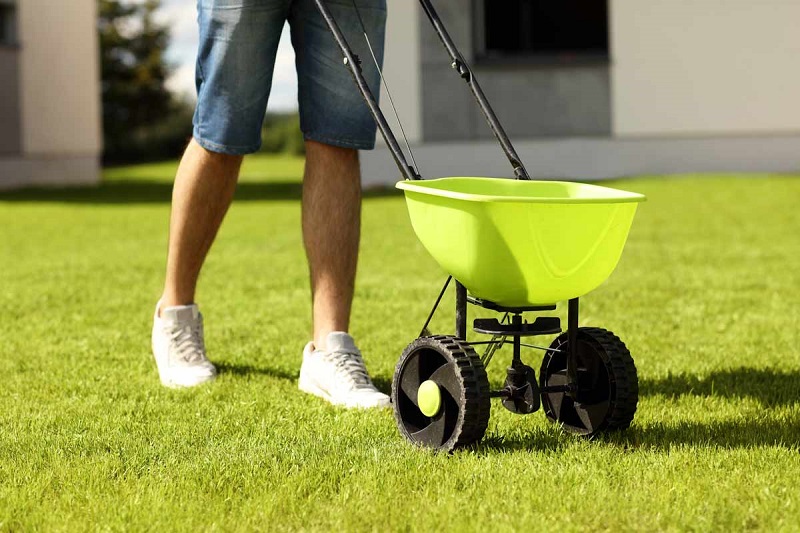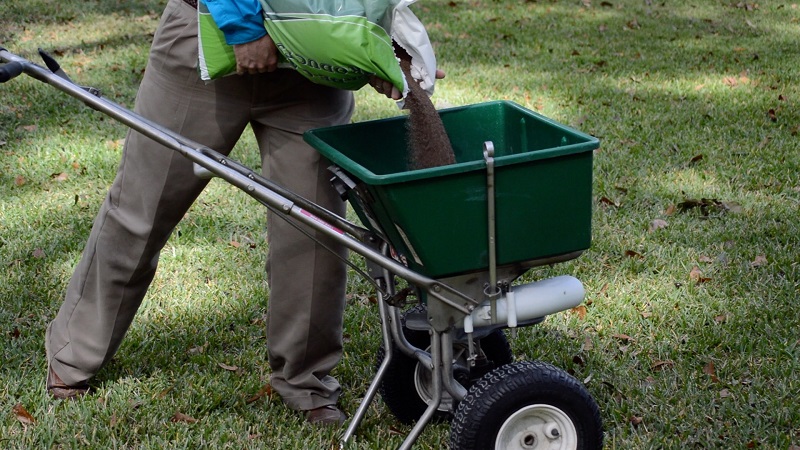Lime For Lawns - Find Out When and How to Apply Lime to Lawn
Adding lime to soil is a recommended treatment which improves the condition of the grass. Lime for lawn not only makes it look better, but also removes unwanted moss and weeds. Are you wondering when to apply lime to lawn? Are you not sure whether you can do it on your own? We know – take a look!

Lime for lawns – what is it, exactly?
Adding lime to lawn’s soil is a treatment which is supposed to increase its pH level. Overly acidic soil is not good for grass growth – because of it, its root system is poorly developed, it doesn’t grow as splendid, and becomes overwhelmed by weeds and moss.
When deciding to add lime to the lawn, one should use special fertilizers designed particularly for this purpose. Thanks to them, the soil’s pH is raised from highly acidic to slightly acidic or alkaline.

Why add lime to lawn?
Adding lime to soil is great not just for the lawn, but also for other plants growing in the garden. It’s done when the pH is too high – lawn lime reduces the acidity from high to much lower.
Garden lime is also a perfect nutrient for plants, thanks to which they can retrieve nitrogen from the soil much quicker and more effectively. The lawn grows better after lime application, and the grass blades become stronger.
Applying lime to lawn allows achieving proper soil conditions for grass. You can use it e.g., if you want ornamental grasses to develop a better root system, and absorb nutrients better.

When to add lime to lawn?
Experienced gardeners know perfectly well that before applying lime to soil, one should check its pH first. Special testers can be purchased in practically any gardening store. Thanks to them, one can become sure that the soil is too acidic for the grass, and therefore needs changing its pH from acidic (below 5.5 pH) to slightly acidic or alkaline (6-7 pH).
You can apply lime to the lawn in spring after first melts. Plan the treatment for the beginning of February, before grass starts growing.
Adding lime to lawn in fall
You can also use lawn lime in late fall, when grass stops growing. Plan the application between the end of September and the beginning of November. Changing the soil’s pH helps in restoring ideal growing conditions for the lawn. Using garden lime in fall also removes weeds, thanks to which your garden is perfectly prepared for winter.

Applying lime to lawn – do you need special equipment?
Lime application in the garden is easy, and anyone can do it. The easiest method involves simply taking a small amount of the fertilizer with a gloved hand and spreading it evenly around a particular area.
If you want, you can also purchase a special device designed specifically for spreading garden lime. A small cart, usually made of plastic, is a simple and effective construction. All you have to do is put an amount of the fertilizer in the container and spread it by pushing the cart around the lawn. This way, lime is spread evenly, which is the biggest advantage of such equipment.

Garden lime – what is the best lime for lawns?
There are two products you can use as garden lime. One is dolomite, and the other – calcium fertilizer.
- The first mentioned product contains around 30% calcium oxide.
- Calcium fertilizer consists of 50% calcium oxide, thanks to which you can use less of the product.
If you noticed signs of a low pH on your lawn, such as moss, you need the right type of lime. A special calcium-magnesium mixture is the best option. This substance not only increases the soil’s pH, but also gets rid of mosses threatening the grass.
Make sure to dose the product properly during the process. Also, consider the most important parameters:
- the type of the product you’re using,
- the soil’s quality,
- the current pH level of the soil.

Can one apply lime to lawn without a help from a professional?
Applying lime to lawn is not a complicated process. You can easily do it yourself. Just remember about a proper dosage of the product, so you don’t actually damage the grass.
Any gardener can do it – but those who lack experience and aren’t confident about the matter, are advised to be careful. It’s better to apply a lower dosage of the fertilizer and, if needed, repeat the process after some time.

📍 How to tell if your lawn needs lime?
Adding lime to soil is a good method for increasing the soil's pH quickly and effectively. If the soil's pH is low, and it's acidic, grass grows poorly and gets replaced by moss and weeds.
📍 What does lime do for lawn?
The main purpose of adding lime to soil is increasing its pH. Thanks to this treatment, the grass becomes thicker, stronger and more durable.
📍 What is the best garden lime for lawn?
You can pick between several types of lawn lime. Calcium fertilizer or dolomite are the most popular options.
📍 When should you apply lime to lawn?
Applying lime to lawn is typically done in fall, when grass stops growing. The end of September until the beginning of November is the best time for this treatment. The other best time is in spring, after winter melts, and before the grass begins its growth. It can be done between the beginning of February until the end of March.
Featured articles




